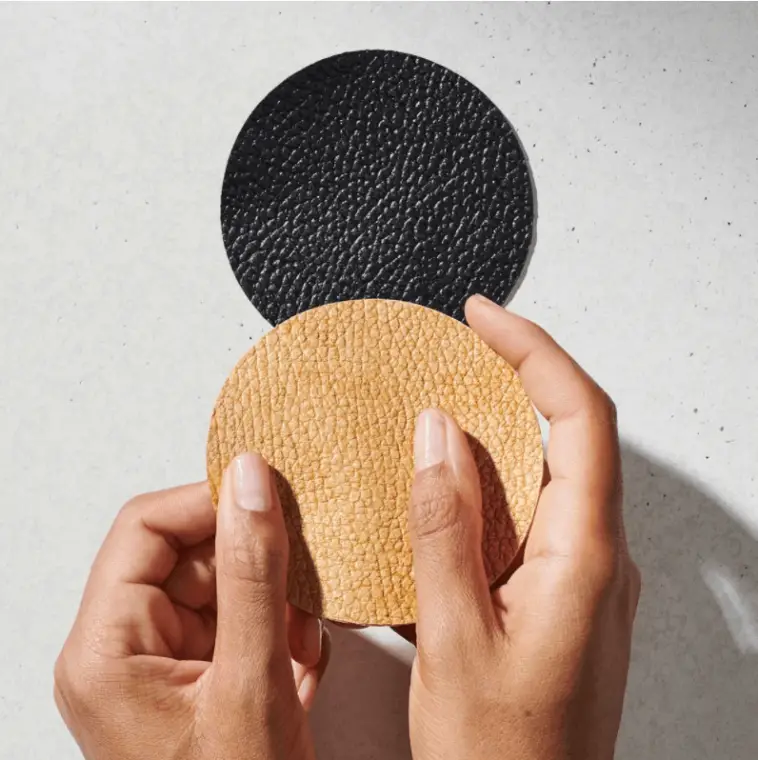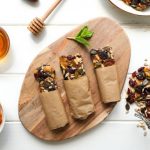Fashion and cutting edge science meet to help save the world—and look good doing it
Let’s face it—when we think of making changes in our lives to save the environment or be ecologically friendly we usually think of sacrifices. Whether that is giving up the convenience of disposable plastics or choosing tofu instead of our favorite protein, it can start to feel like you’re picking the second-best, or even just making changes that you just didn’t want. Despite that, we know it’s something we have to do.
This is where we come to leather—a staple of the fashion, both aesthetically pleasing and instrumental to early human civilization. While authentic leather contains a price tag that includes thousands of gallons of water, food, and life, commonly used faux leather uses petroleum and contributes to microplastic pollution, and lacks the same durability and softness.
That’s where an unlikely alternative pops up, like toadstools after the rain. Mushroom leather, a newer material developed by Bolt Threads, has hit the scenes of the fashion world to provide us an option that is not only cruelty-free—but ecologically-friendly.
Mushroom Leather for the Win
While Mushroom leather sounds like something out of a fairytale, the science and research behind it are very real.
In fact, the real-world impact of mushroom leather is using significantly less water, and land, while emitting fewer greenhouse gasses. This also includes the elimination of the need for the toxic chemicals used in the tanning process which contribute to water pollution. As mushrooms are quick to grow, they can be farmed in a matter of weeks, instead of the years it takes for the raising and production of traditional leather.
Furthermore, the materials used in creating mushroom leather are renewable, such as agricultural and forestry by-products and sawdust which would have otherwise gone to waste or contributed to landfill space. Even just the reduction of water use is a huge step forward as parts of the world struggle to make sure they have enough safe and clean drinking water.
Of course, any time I see a new product coming forward claiming that it will save the world, you always stop to think—will it work well enough that people will actually want to use it? Pleather often lacks the visual appeal, comfort, and durability of the traditional material, oftentimes appearing cheap and leaving the wearer feeling sweaty and uncomfortable. It also continues to rely on petrochemicals and contributes to microplastics which seep into the water and cause further problems.
Mushroom leather, however, doesn’t hesitate to stand up to the iconic and show us what it can do. Through different ecologically friendly processing techniques and natural stains, they are able to duplicate the texture and utility of other leathers.
Other factors, such as the thickness or softness of the product can also be adjusted by controlling the temperature and humidity during the growth process. This means dyes, embossment, and texturing can be applied to the material to replicate reptile, ostrich, and cow leathers and retain the durability that we have come to expect from traditional leather. With this versatility, it can be custom grown for whatever application it is needed for and diminishes the concern of inconsistencies and significant flaws in the material.
Naturally, this development has caught the attention of designers the world over. Brands such as Adidas, Lululemon, and Kering are planning on launching clothes and accessories sporting this new material as soon as 2021. In 2018, Stella McCartney partnered with Bolt Threads to produce a stunning prototype of their best-selling bag, which went on to be featured in the Victoria & Albert Museum’s “Fashioned from Nature” exhibit in London.
The great thing about this is the fact that one doesn’t need to feel like they’re choosing a “second-best” in hopes of making environmentally friendly choices. With the high quality of mushroom leather, it feels more like making a logical decision. That is the kind of artistic thinking we need to help people consider sustainable fashion to be the ideal choice.




